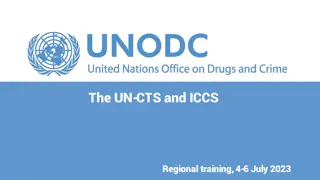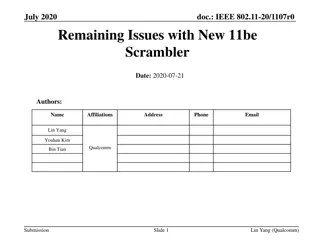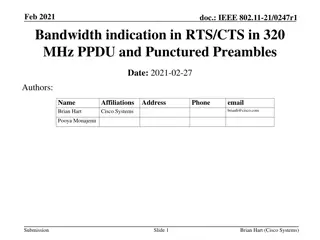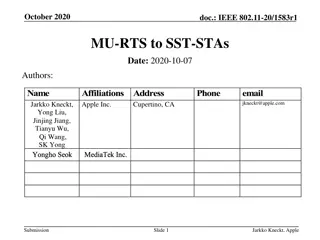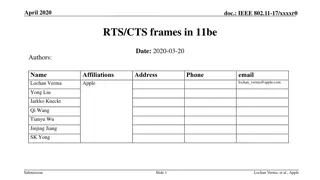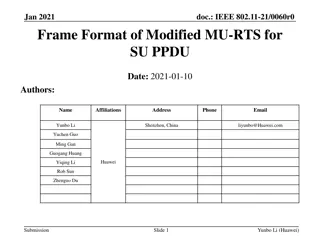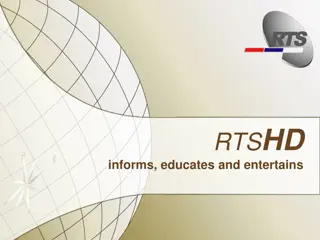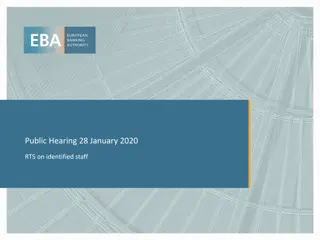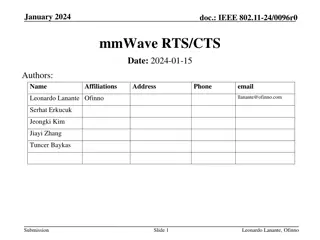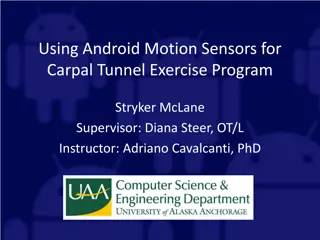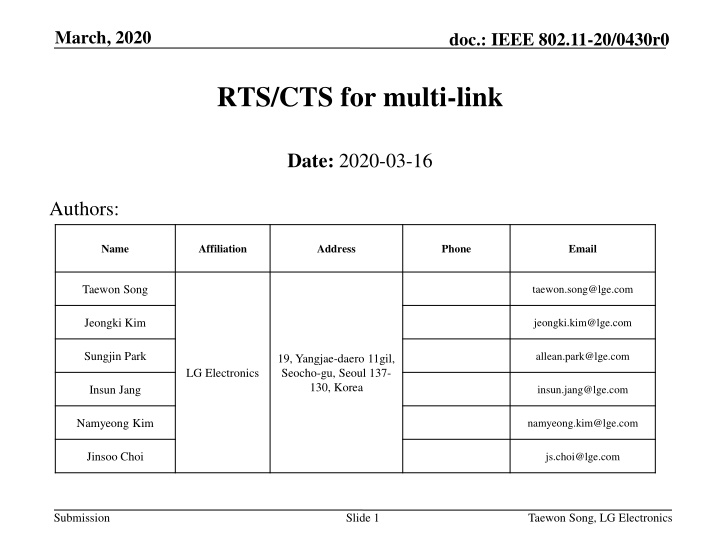
IEEE 802.11-20/0430r0 RTS/CTS for Multi-Link Systems
Explore the implications and solutions related to the RTS/CTS protection issue for multi-link devices in the IEEE 802.11-20/0430r0 standard. Learn about the challenges faced with simultaneous transmission and reception on paired links and the strategies proposed to address these issues effectively.
Download Presentation

Please find below an Image/Link to download the presentation.
The content on the website is provided AS IS for your information and personal use only. It may not be sold, licensed, or shared on other websites without obtaining consent from the author. If you encounter any issues during the download, it is possible that the publisher has removed the file from their server.
You are allowed to download the files provided on this website for personal or commercial use, subject to the condition that they are used lawfully. All files are the property of their respective owners.
The content on the website is provided AS IS for your information and personal use only. It may not be sold, licensed, or shared on other websites without obtaining consent from the author.
E N D
Presentation Transcript
March, 2020 doc.: IEEE 802.11-20/0430r0 RTS/CTS for multi-link Date: 2020-03-16 Authors: Name Affiliation Address Phone Email Taewon Song taewon.song@lge.com Jeongki Kim jeongki.kim@lge.com Sungjin Park allean.park@lge.com 19, Yangjae-daero 11gil, Seocho-gu, Seoul 137- 130, Korea LG Electronics Insun Jang insun.jang@lge.com Namyeong Kim namyeong.kim@lge.com Jinsoo Choi js.choi@lge.com Submission Slide 1 Taewon Song, LG Electronics
March, 2020 doc.: IEEE 802.11-20/0430r0 Overview RTS/CTS protection issue has been dealt with some contributions [1,2] On the other hand, TGbe shall support a MLD that has constraints to simultaneously transmit and receive on a pair of links to operate over this pair of links [3] In this contribution, we address a potential problem when RTS/CTS protection is used for MLDs which do not support simultaneous tx/rx and introduce some options to deal with the problem Submission Slide 2 Taewon Song, LG Electronics
March, 2020 doc.: IEEE 802.11-20/0430r0 Background: Multi-link framework EHT device that has more than one affiliated STA is defined as multi- link device (MLD) [3] Links of MLD can be categorized into two types: STR link set and non-STR link set STR link set: Downlink and uplink frames can be transmitted simultaneously over the links in the STR link set Non-STR link set: Transmission on a link in the non-STR link set causes in-device interference on reception of other links in the non-STR link set MLDs that are constrained to simultaneously transmit and receive on a pair of links should be able to operate over this link pair Submission Slide 3 Taewon Song, LG Electronics
March, 2020 doc.: IEEE 802.11-20/0430r0 Background: Spatial multiplexing power save SM power saving allows a non-AP STA to operate with only one active receive chain and thus average power consumption can be reduced SM power saving are of two types Static SM power saving: A STA enables its multiple receive chains only when it receives SM Power Save action frame from AP Dynamic SM power saving: A STA enables its multiple receive chains only when it receives stard of sequence frames Although it is up to vendors which frame should be used for dynamic SM power saving, exchanging RTS/CTS frames or MU-RTS/CTS frames is commonly used for this purpose RTS DATA AP CTS ACK CTS ACK STA DATA RTS Active chain = 1 Active chain = 4 Active chain = 1 Dynamic SM power saving assuming number of STA s radio is 4 Submission Slide 4 Taewon Song, LG Electronics
March, 2020 doc.: IEEE 802.11-20/0430r0 Problem on RTS/CTS for non-STR MLD According to legacy .11 standard, a non-AP STA shall commence the transmission of a CTS frame response if the non-AP STA receives an (MU-)RTS Trigger frame However, the response will cause internal interference to non-STR non-AP STAs, as shown in the figure below This can cause a collision of a receiving frame, DATA1, even the non- AP STA is able to receive frames, i.e, DATA1 and DATA2, at the same time RTS AP MLD (STR link set) Link B DATA1 Link A CTS ACK (MU-) RTS Busy DATA2 ACK CTS CTS ACK Link A Non-AP MLD (Non STR link set) DATA1 RTS Busy ACK CTS Link B (MU-) RTS DATA2 : Internal interference Submission Slide 5 Taewon Song, LG Electronics
March, 2020 doc.: IEEE 802.11-20/0430r0 Candidate Options Option 1: Recommend not to transmit to non-AP MLDs where internal interference may occur on reception on other links In RTS case, even though the AP MLD gets to access the channel, the AP MLD have to release the channel RTS DATA1 Link A AP MLD (STR link set) CTS ACK AP MLD accessed the channel but there are no frames to send, so the channel is released immediately. Busy Link B In MU-RTS case, the AP MLD excludes the non-AP MLDs from following MU-RTS frame DATA1 RTS Link A AP MLD (STR link set) CTS ACK Busy DATA2 MU-RTS Link B ACK CTS AP MLD will indicate recipients excluding the non-AP MLDs in which internal interference may be occurred. Submission Slide 6 Taewon Song, LG Electronics
March, 2020 doc.: IEEE 802.11-20/0430r0 Candidate Options In option 1, even though the non-AP MLD can receive simultaneously on its links, the non-AP MLD cannot receive any frames initiated by (MU-)RTS frame while receiving frames on other links Option 2-1: The AP MLD can disable RTS/CTS operation regardless of RTS threshold on demand It is possible because the AP MLD is aware of capabilities (i.e., whether STR is supported or not) and current status of transmission/reception of associated non-AP MLDs This option is applicable to both DL SU and DL MU Instead of RTS/CTS exchange, CTS-to-self frame can be used SM power saving cannot be supported in this option since (MU-)RTS frame is not transmitted in this option DATA1 RTS Link A AP MLD (STR link set) CTS ACK Busy DATA2 Link B ACK Based on capabilities and current status, (MU-)RTS/CTS is disabled Submission Slide 7 Taewon Song, LG Electronics
March, 2020 doc.: IEEE 802.11-20/0430r0 Candidate Options Option 2-2: Omit the corresponding STA s information (e.g., RA in RTS, AID in MU-RTS) in the (MU-)RTS frame Regardless of receptions of CTS frames, an RU allocation plan of following PPDU does not vary Hence, unless all CTS frame transmissions fail, the AP MLD will transmit data frame regardless of CTS reception result SM power saving cannot be supported in this option since a Trigger frame does not include a User Info field with the AID of the corresponding STA DL SU case cannot be supported Submission Slide 8 Taewon Song, LG Electronics
March, 2020 doc.: IEEE 802.11-20/0430r0 Diagram for Option 2-2 AP MLD A is transmitting frame to non-AP MLDs B and C When Link B becomes idle, AP MLD A gets opportunity to access channel AP MLD A makes up MU-RTS for recipients, non-AP MLDs C and D, with omission non-AP MLD B from the MU-RTS Non-AP MLD B can successfully receive DATA2 as if a basic method, not RTS/CTS exchange MU-RTS DATA1 (RA=MLD B, MLD C) Link A AP MLD A (STR link set) CTS ACK (AIDs in User Info= MLD C, MLD D) DATA2 (RA=MLD B, MLD C, MLD D) Busy MU-RTS Link B ACK CTS CTS ACK Link A Non-AP MLD B (Non-STR link set) DATA1 MU-RTS ACK Busy Link B DATA2 CTS ACK Link A Non-AP MLD C (STR link set) DATA1 MU-RTS ACK CTS Busy Link B DATA2 MU-RTS Link A Non-AP MLD D (Non-STR link set) ACK CTS Busy Link B DATA2 MU-RTS Submission Slide 9 Taewon Song, LG Electronics
March, 2020 doc.: IEEE 802.11-20/0430r0 Candidate Options Option 2-3: Indicate whether the CTS response is required or not to the corresponding STAs Each STA determines whether to response with CTS frame within SIFS duration or not by means of information in its corresponding User Info field For example, RU Allocation subfield or other reserved field can be used In this option, the MU-RTS behaves like CTS-to-self for non-AP MLDs which may occur internal interferences SM power saving works well in this option This option is applicable to DL MU Since the corresponding STA cannot respond with CTS frame, the transmitter of RTS frame cannot distinguish between transmission failure of RTS frame and intentional disregard Submission Slide 10 Taewon Song, LG Electronics
March, 2020 doc.: IEEE 802.11-20/0430r0 Diagram for Option 2-3 AP MLD A is transmitting frame to non-AP MLDs B and C When Link B becomes idle, AP MLD A gets opportunity to access channel AP MLD A makes up MU-RTS for recipients, non-AP MLDs B, C and D, with indication of responding CTS frame As non-AP MLD B is notified by MU-RTS, it does not response, but it expect transmission from AP MLD A MU-RTS DATA1 (RA=MLD B, MLD C) Link A AP MLD A (STR link set) CTS ACK (AIDs in User Info=MLD B w/ indication, MLD C, MLD D) DATA2 (RA=MLD B, MLD C, MLD D) Busy MU-RTS Link B ACK CTS CTS ACK Link A Non-AP MLD B (Non-STR link set) DATA1 MU-RTS ACK Busy Link B MU-RTS DATA2 CTS ACK Link A Non-AP MLD C (STR link set) DATA1 MU-RTS ACK CTS Busy Link B DATA2 MU-RTS Link A Non-AP MLD D (Non-STR link set) ACK CTS Busy Link B DATA2 MU-RTS Submission Slide 11 Taewon Song, LG Electronics
March, 2020 doc.: IEEE 802.11-20/0430r0 Summary Option 2-2: Omit the corresponding STA s information Option 1: Restrict transmission Option 2-1: Transmit without RTS frame Option 2-3: Indicate to the corresponding STAs Bandwidth efficiency High High High Low SU/MU support Either SU/MU support None MU support MU support Can be protected at tx side Can be protected at tx side Cannot be protected at both tx and rx sides Protection None SM power saving Supported None Not supported Not supported Submission Slide 12 Taewon Song, LG Electronics
March, 2020 doc.: IEEE 802.11-20/0430r0 Conclusion We have discussed several candidates to avoid internal interference for non-STR STA MLDs when RTS/CTS protection is used Restrict transmission Transmit without RTS frame Omit the corresponding STA s AID Inform the corresponding STAs Indicating to the corresponding STAs whether the CTS response is required or not can be a good option to deal with the problem since the option can support SM power saving that the other options can t Especially in case of DL SU, disabling RTS/CTS operation is a good solution Submission Slide 13 Taewon Song, LG Electronics
March, 2020 doc.: IEEE 802.11-20/0430r0 References [1] 19/2125r0, EHT RTS and CTS Procedure [2] 20/0026r0, MLA: Support for Constrained Devices [3] 19/1262r8, Specification Framework for TGbe Submission Slide 14 Taewon Song, LG Electronics
March, 2020 doc.: IEEE 802.11-20/0430r0 Straw Poll 1 Do you agree to add the following text to the TGbe SFD? TGbe shall allow RTS/CTS protection considering MLD that has constraints to simultaneously transmit and receive. Submission Slide 15 Taewon Song, LG Electronics
March, 2020 doc.: IEEE 802.11-20/0430r0 Straw Poll 2 Do you agree to add the following text to the TGbe SFD? An MLD can indicate whether each recipient STA shall commence the transmission of a CTS frame response or not via MU-RTS frame A detailed method is TBD. Submission Slide 16 Taewon Song, LG Electronics

